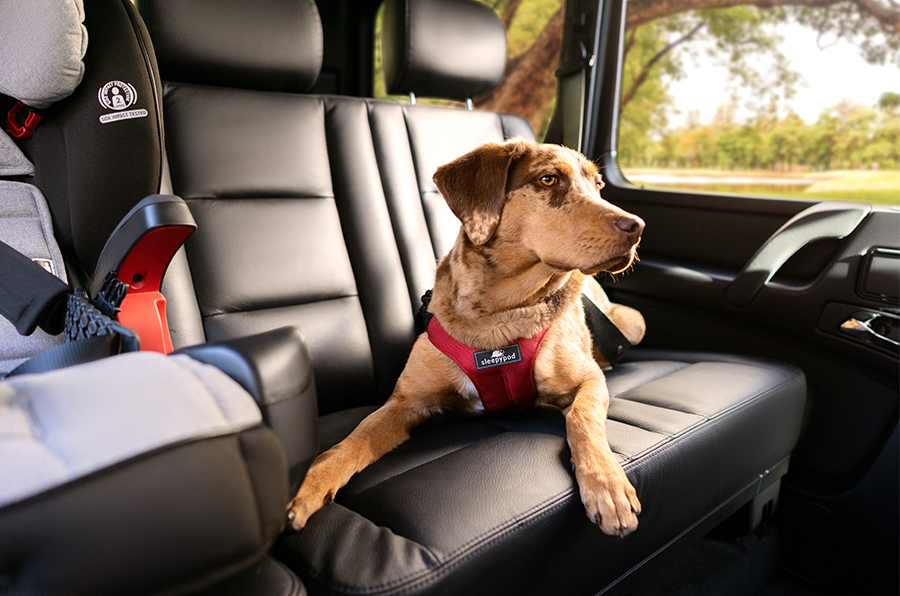
Summer is a perfect time to travel. Every year, millions of people head out to take full advantage of the warm, sunny summer months to explore, visit friends or relatives, or enjoy spending time in the great outdoors. Increasingly, summer travelers are bringing their pets along with them on their trips. But are they doing enough to keep themselves and all of their passengers safe on the road?
Distracted Driving Dangers
We’re all guilty of engaging with our GPS, fumbling for our phone when it falls between the seats, or petting our four-legged travel companion while we drive, and most of us never give it a second thought. Unfortunately, the consequences of taking our eyes off the road, our hands off the wheel, or our minds off of driving, can be very serious. According to the Center for Disease Control, or CDC, distracted driving and a failure to pay attention to road and traffic conditions cause 25 to 30 percent of police-reported traffic crashes. This adds up to roughly 1.2 million crashes each year. Furthermore, according to the National Highway Traffic Administration, or NHTSA, distracted driving is a factor in 20 percent of car accident injuries.
How Pets Affect Distracted Driving
With more school-age drivers on the road and more people in general traveling, exploring new places, or visiting with family or friends. It’s no wonder that distracted driving reaches its peak during summer. Add pet travel companions into the mix, and there’s even more cause for concern: unrestrained pets can both cause distractions and make distracted driving accidents more dangerous.
“Pets can easily take a driver’s attention from the road, posing a serious risk not only to the pet but also to the passengers riding in the same vehicle,” says Michael Leung, co-founder and lead product designer of Sleepypod, a manufacturer of premium pet carriers and pet restraint systems. “If there is nothing restraining a pet in a hard stop or car accident, the pet can become a projectile and potentially collide with fellow pets or human passengers.”
An accident like this can have catastrophic consequences, no matter how large or small the pet in question is. A 10-pound dog in a 50-mile-an-hour car crash exerts 500 pounds of force. On the other end of the spectrum, 80-pound dog in a 30-mile-per-hour crash exerts 2,400 pounds of force.
Injuries from accidents aren’t the only danger: unrestrained pets can fall out of an open window, or even jump out if something catches their interest. They may also run out if someone opens the door, or flee the car in fear after an accident, possibly becoming lost, injured, or worse.
Restraints and Pet Safety
A high-quality, rigorously tested pet restraint can make all the difference when it comes to keeping every passenger safe on the road, as it both prevents pets from creating distractions and keeps them from causing harm or being harmed during an accident. Many pet parents overlook the benefits of restraints: an American Automobile Association (AAA) survey found that, while more than 80 percent of drivers admitted that they recognize the dangers of driving with an unrestrained pet, only 16 percent used restraints.
“Hopefully, you’ll never have to put a car restraint for your pet to the test,” says Michael, “But taking an extra minute to properly secure a pet before heading on the road for summer adventures could offer peace of mind and reassurance.”
Most Effective Use of Pet Restraints
Michael led Sleepypod’s rigorous advanced crash-testing program, in which he and his research and development team used a sizable number of crash test dummy dogs and cats, outfitted with sensors and monitors, to collect and measure important data on car crashes and pet restraints. Michael and his team were also able to collect significant amounts of real-life accident and pet restraint data through Sleepypod’s Crash Replacement Program. The program encourages customers to turn in pet safety restraints that have gone through an accident–no matter the brand or type–in exchange for replacement pet restraints or discounts on new pet restraints. The used restraints are then studied for research and development purposes.
Michael provides some well-earned advice for minimizing pet-related distractions and keeping pets safe during accidents:
- While great for human safety, airbags pose a hazard for pets. Pets should always be restrained in a back seat to prevent them from injury due to a deployed airbag.
- In situations where a reputable, tested, high-quality car restraint can’t be used, the next safest option for your pet is to be placed in the footwell behind the front seat.
- Size matters–smaller pets are safer when fully enclosed in a safe carrier. Meanwhile larger dogs are safest using a car safety harness that does not connect the pet with an extension tether.
- Pets should have enough leeway to sit and lie down comfortably, but not enough to allow them to slide forward and drop off the seat, or “submarine,” if the driver stops short, turns sharply, or crashes.
Restraints are the best way to create safe boundaries and make sure you’re both secure during your travels, so you can look forward to many more road trips together this summer, and beyond.
Photo Credit: Sleepypod